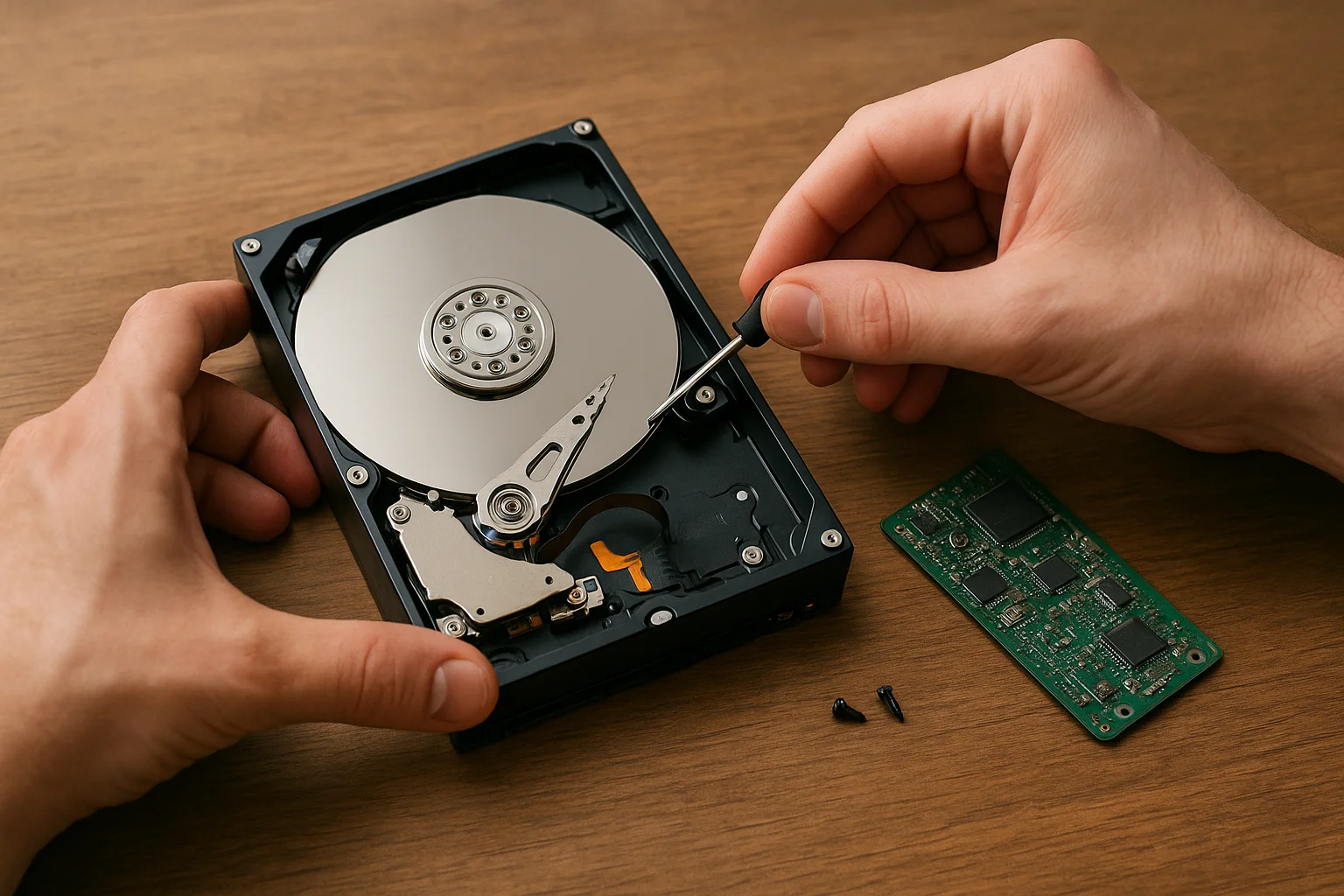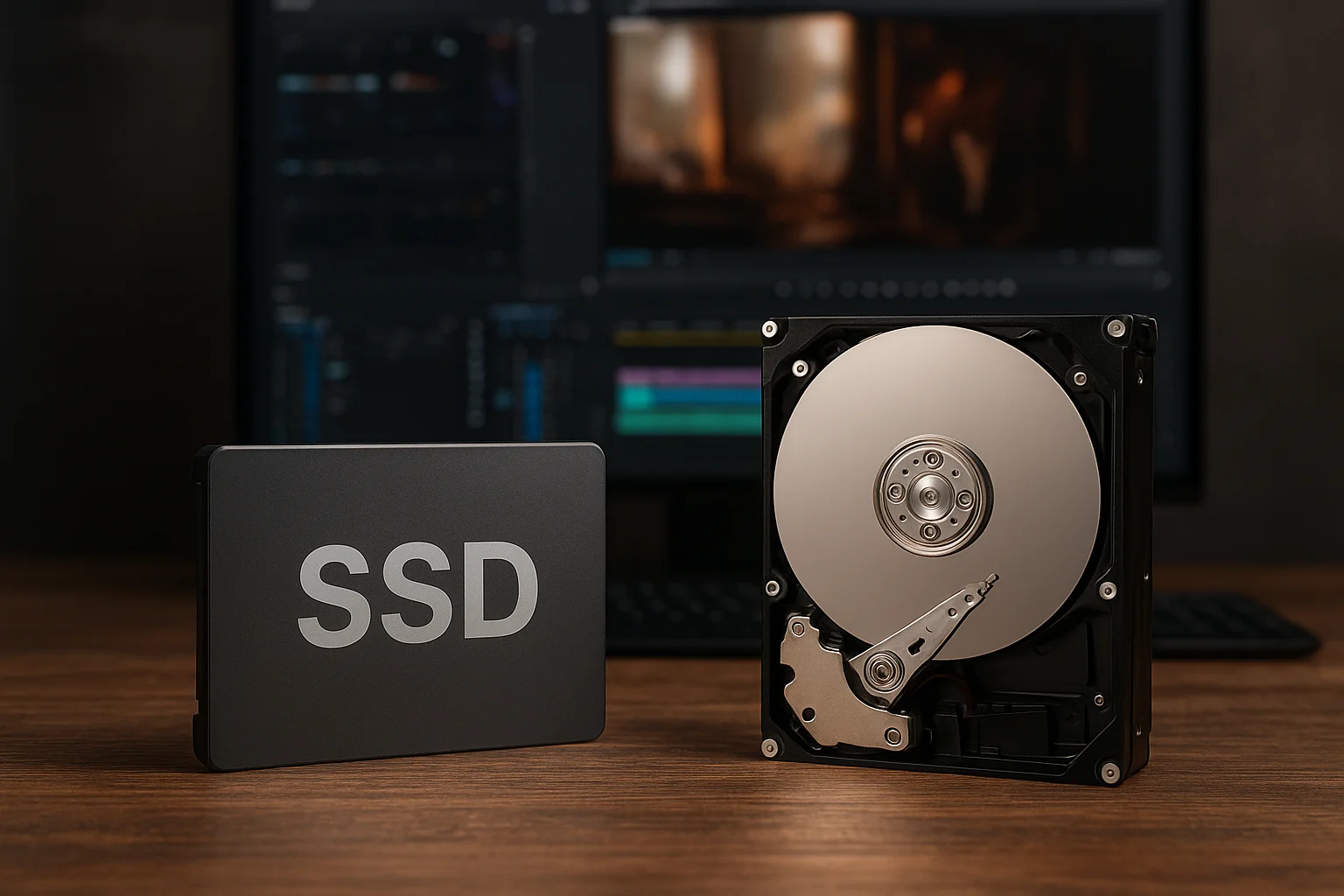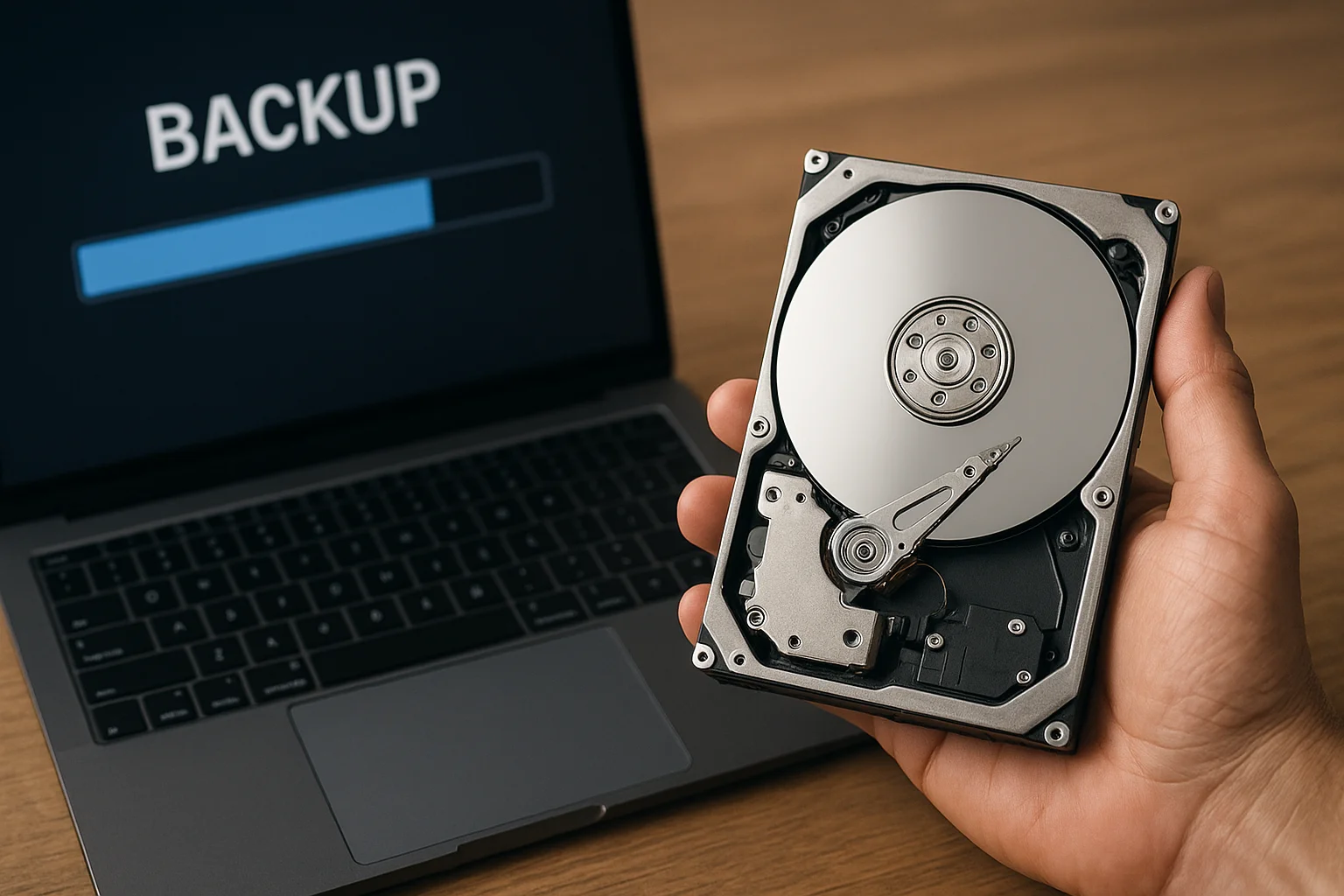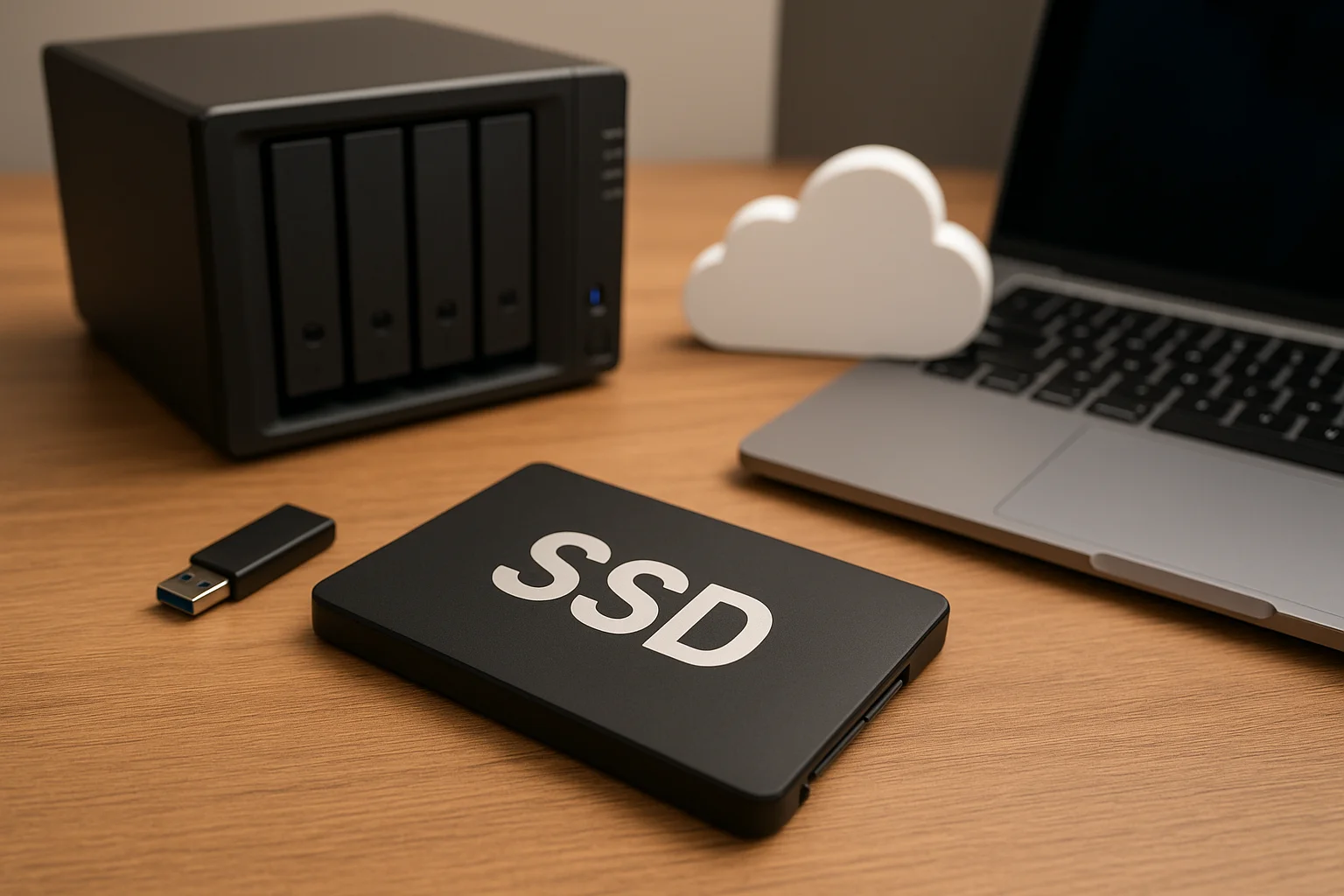The Hidden Cost of Unrepairable Technology
Modern storage devices have become faster, smaller, and more efficient than ever, but this progress has come with an invisible price: the loss of repairability. In the pursuit of sleek design and cost reduction, many manufacturers have eliminated user-serviceable parts, replacing screws with adhesives and standardized connectors with proprietary systems. As a result, a failed drive often means a total replacement rather than a simple component swap.
This lack of repairability has deep consequences. When a solid-state drive (SSD) fails, users typically have no way to recover or replace individual components. Even something as basic as replacing a worn-out connector can be impossible without specialized tools and technical knowledge. This trend affects not only individual consumers but also small repair shops and independent technicians who once offered affordable repair services for storage hardware.
From an environmental standpoint, the inability to repair or refurbish drives contributes directly to electronic waste. Millions of drives are discarded each year, often containing valuable materials like gold, silver, and rare earth elements. Yet only a fraction of these materials are recovered. Consumers pay twice: first for the cost of replacement and again through the environmental impact of disposal and new manufacturing.
Financially, the implications are significant. Instead of paying a modest amount for a repair or component replacement, users are forced into buying a brand-new unit. The industry’s design choices therefore limit consumer autonomy and inflate long-term costs. In short, the hidden cost of unrepairable technology is not only monetary but ecological and social.
The Design Shift: From Modular to Disposable
Storage devices were once built with a modular philosophy. Hard drives used to feature accessible casings, standardized SATA connectors, and replaceable components such as logic boards and platters. Today, this approach has been replaced by integration and miniaturization. Many external SSDs are sealed shut, and internal drives are built as single, non-serviceable units.
The motivations behind this shift are understandable from a manufacturing perspective: it reduces production costs, ensures consistent performance, and limits user tampering. However, it also eliminates flexibility. For example, a user who wants to upgrade a faulty controller chip or replace worn NAND modules has no practical option to do so without voiding warranties or damaging the unit.
This trend is particularly visible in portable drives, which often combine the storage and controller inside an enclosed casing with no standard screws or ports. Even a professional repair technician may struggle to open them without destroying the enclosure. The result is a product that, once damaged, becomes permanently unusable.
The move from modular to disposable designs can be summarized by comparing traditional HDDs and modern SSDs:
| Feature | Traditional HDDs | Modern SSDs |
|---|---|---|
| Component accessibility | High – easily replaceable logic board and connectors | Low – sealed or soldered components |
| Upgrade potential | Users could increase capacity or swap platters | Virtually none; components are tightly integrated |
| Repair cost | Low to moderate | High or impossible |
| Environmental impact | Lower due to parts reuse | Higher due to total replacement |
While progress in speed and efficiency is welcome, the balance between performance and maintainability has clearly shifted. Restoring this balance is possible only if manufacturers reconsider their priorities and recognize the long-term value of repairability.
Right to Repair and Storage Devices
The Right to Repair movement has gained global traction as consumers demand more control over their electronic products. Originally focused on smartphones, laptops, and home appliances, the movement now extends to digital storage hardware. Advocates argue that users should have the right to diagnose, repair, and replace parts of their drives without losing warranty coverage or access to official support.
Several jurisdictions, including parts of the European Union and the United States, have begun drafting or passing laws requiring manufacturers to provide spare parts, documentation, and diagnostic tools. However, these measures often exclude storage devices, leaving a gap in protection for users whose drives fail prematurely.
Repair advocates emphasize that storage devices are not only hardware but also repositories of personal and professional data. When a drive becomes unrepairable, users risk losing access to valuable information. Repairability is therefore not just a matter of convenience but also of data sovereignty.
Manufacturers have an opportunity to embrace this movement rather than resist it. Providing accessible firmware updates, detailed schematics, and open diagnostic tools would benefit both professionals and consumers. It would also reduce the volume of drives discarded due to minor issues such as controller malfunctions or power delivery faults.
To illustrate the kinds of changes that can make a difference, here are some practical expectations users should demand under Right to Repair principles:
- Availability of genuine spare parts, such as connectors and controller boards
- Public access to firmware and diagnostic utilities
- Designs that use standard screws and connectors instead of adhesives
- Transparent documentation showing how to perform basic maintenance
- Support for independent repair professionals through official training or guides
If such measures became industry standards, drive repairability could improve dramatically, reducing waste and empowering users to maintain their devices responsibly.
What True Repairability Should Look Like
To move beyond slogans, it is essential to define what genuine repairability means in practice for modern drives. A repairable device is not simply one that can be opened; it is one designed with clear pathways for diagnosis, disassembly, and part replacement.
In storage devices, true repairability includes several concrete features:
- Modular design: Components like the controller, memory modules, and interface board should be detachable and replaceable without damage.
- Standardized interfaces: Using common connectors (SATA, NVMe, USB-C) facilitates repair and upgrades.
- Accessible firmware: Allowing users to restore or update firmware independently can fix common software-related failures.
- Transparent error reporting: Diagnostic LEDs or software tools that explain failures make troubleshooting feasible for users.
- Open repair documentation: Publicly available manuals enable repair communities to share knowledge safely.
These characteristics do not conflict with innovation. In fact, they can encourage it. A company that designs drives to be repaired rather than replaced demonstrates a commitment to sustainability and customer trust. It also benefits from an extended product lifecycle, brand loyalty, and reduced return rates.
There are already promising examples. Some industrial-grade SSDs are built with removable controllers or firmware accessible through open protocols. In the enterprise world, modular storage systems allow technicians to replace failed NAND modules on site. Translating these concepts into the consumer market would require minimal adaptation but could yield enormous benefits.
Consumers can assess repairability by looking for the following signs when purchasing:
- Visible screws or access panels on external drives
- Manufacturers that publish service manuals or schematics
- Replaceable cables and connectors rather than integrated ones
- Models that have community support or repair guides available online
A truly repairable drive respects the principle that ownership should include the ability to maintain and restore functionality without dependence on the manufacturer.
How Consumers Can Push for Change
Consumers are not powerless in the face of disposable technology. By adjusting purchasing behavior and voicing concerns, they can shape market priorities. Every repairable product purchased sends a signal that sustainability matters.
There are several effective strategies that individuals and organizations can adopt to promote repairability:
- Support transparent brands: Choose manufacturers that openly publish repair guides or partner with independent repair networks.
- Ask questions before buying: Contact manufacturers to inquire about spare parts and repair policies. Public inquiries encourage accountability.
- Participate in repair communities: Online forums and local repair cafés help exchange knowledge and document solutions for specific drive models.
- Advocate for policy change: Support legislation that extends Right to Repair protections to storage devices.
- Recycle responsibly: When a drive cannot be repaired, ensure it is properly recycled to recover materials and protect data.
In addition, consumers can influence companies indirectly through reviews and social media. Highlighting repair-friendly products and criticizing non-repairable ones creates public awareness. Manufacturers track these sentiments closely, and visible feedback often drives design adjustments in subsequent product generations.
Businesses and institutions also have a crucial role. Large-scale purchasers of IT equipment can include repairability criteria in procurement policies, encouraging suppliers to design for serviceability. Universities, public administrations, and corporations wield significant influence when they prioritize products that can be maintained over time.
Ultimately, repairability is not an abstract ideal but a practical demand. It affects cost, sustainability, and the freedom to control one’s own hardware. By making informed choices and insisting on transparency, consumers can help drive the industry toward more ethical and sustainable practices.






